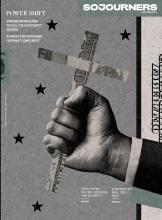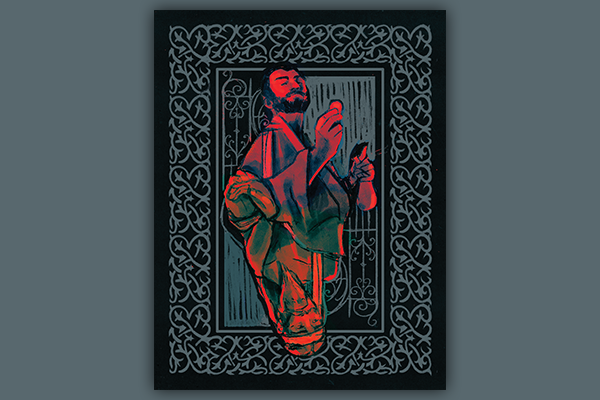AT A KEY JUNCTURE in Luke’s narrative of Jesus’ public ministry, the Nazarene spins the short, foreboding cautionary tale of Lazarus and the rich man (16:19-31). It is set in the afterlife, where a rich man who is a model of entitlement and denial encounters Abraham, the primal progenitor of his people. They have a tense and terse exchange, albeit at a distance.
Abraham tries to explain to him two truths about the economic life and world the rich man has just left. First, his wealth was predicated upon a fatal sociological, moral, and theological condition the patriarch calls a chasma mega (“huge gulf”). It separated and insulated him from people who were impoverished and dehumanized by the system that created and sustained his privilege, people whose pain can only be grasped from their side of that social chasm. Second, to find the will and way to eradicate this cruel gulf, the rich man must reread his sacred scriptures.
This tale lies at the center of a series of seven decidedly unflattering portraits of rich men in Luke’s gospel. This series forms the backbone of the middle section of the longest gospel. It is framed before and after by two indictments: of a rich farmer’s selfishness (12:16-21) and of wealthy lawyers’ exploitation of poor widows (20:45-47; 21:1-4). This middle parable functions as Luke’s “narrative fulcrum” and articulates his keystone theme.
It also speaks plainly to our historical moment. We live in an era in which persistent economic disparity threatens social coherence, democratic prospects, and ecological viability. But Luke also assures us that the biblical vision of Sabbath economics represents ancient medicine that can animate the political imagination necessary to heal this otherwise terminal disease.
Jesus’ earlier beatitudes (6:20-26) and disciples’ prayer (11:1-4) proclaim good news to the poor. His realistic parable of the “Defecting Manager” (16:1-12), on the other hand, addresses those caught between the conflicting demands of Sabbath economics and plutocracy or rule by the wealthy (this includes most of us in North America). The “Defecting Manager” parable concludes with an ultimatum: “You cannot serve God and mammon” (16:13). Sabbath economics is rooted in God’s instructions to dismantle, on a regular basis, the fundamental patterns and structures of stratified wealth and power, so that there is enough for everyone.
It is then, to show us the consequences of failing to deconstruct systems of violent social and economic inequality, that Jesus offers the parable of Lazarus and the rich man, a surreal image of a dark mirror. Here, the brutality of disparity is purgatory: for the poor in their daily life; for the souls of the rich here and hereafter; and for all our prospects of peaceable equilibrium in society. Here too, the flames of Hades become a contemporary allegory for our warming planet under climate crisis.
Since mammon ultimately ravages both haves and have-nots (if in different ways), our parable challenges all of us infected with affluenza to view the world upside down — because the truth of social divides can only be seen from their other side.
Read the Full Article

